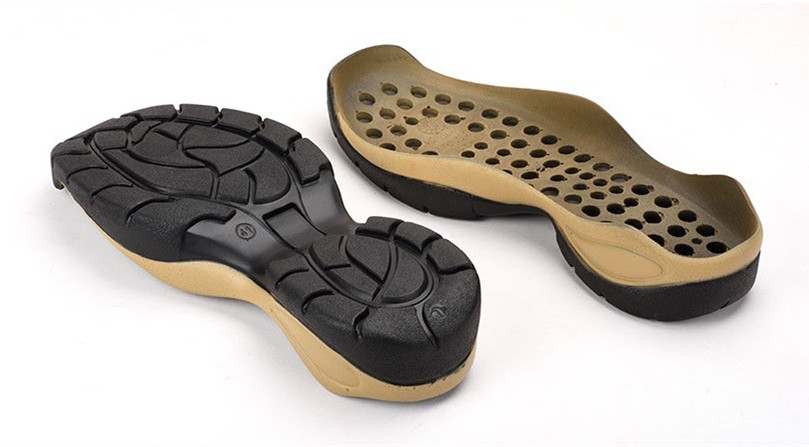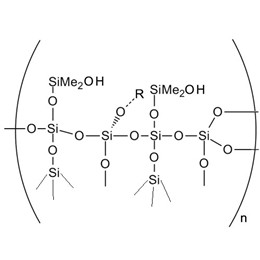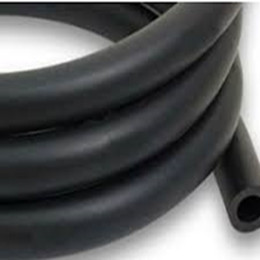The silicone release agent is now more and more used in various production processes, so what advantages does it have compared with the nonsilicone mold release agent to make it more and more popular? This article will discuss from the following five perspectives, and describe in detail the three applications of silicone mold release agents.
Comparison between non-silicone and silicone release agent
1. Reliability
In terms of the surface energy of materials, both organofluoropolymers and organosilicon polymers belong to synthetic surface energy materials, but if they exceed the allowable temperature, organofluoropolymers may release toxic substances; while organosilicon materials have good heat resistance and are non-toxic even if the products of over thermal decomposition are used.
2. Working temperature
Because the polymer skeleton of the silicone polymer is composed of silicone-oxygen bond, the heat resistance is excellent, and the stable temperature is higher than that of almost all types of rubber, so there are no disadvantages such as thermal decomposition and carbonization of release agent.
3. The form and dosage form
Paraffin wax and fatty acid is usually used as a release agent, and the only simple dosage form is used. Correspondingly, silicone release agent has various forms and dosage forms, so it is convenient to adapt to different requirements. Universal mold release agents are widely used in the mold-making processing of liquid plastic products and urethane rubber molds. It can be used not only in extrusion and injection molding processing, but also in the production mold of mold release products to release casting materials from cured rubber molds or properly prepared models, smooth on liquid plastics and improve the quality of processed products.
4. The service life
Because the silicone release agent has excellent resistance, it can withstand the processing temperature of all kinds of plastic products, especially the non-migratory silicone mold release agent based on silicone resin, which not only has a high working temperature, and the components of the release agent are stable and do not migrate, showing an ultra-long service life of the release agent and can multiple releases molding operation.
5. Stripping force of molding
Silicone is a low surface tension energy material, so the stripping force of its products is small and smooth on rubbers, that is, it can easy release mold rubbers.
Specific Application
1. Urethane rubber molds
Polyurethane semi-permanent silicone-based mold release is a milky white liquid that is mainly composed of silicone resin and silicone oil, and is emulsified by adding an appropriate amount of emulsifier.
Compared with ordinary silicone oil-based mold release agents, the addition of special silicone resins effectively improves the wear resistance of the mold release layer and reduces the migration of mold release agent components to the product.
And compared with mineral oil release agents, polyurethane semi-permanent silicone release agents have excellent heat resistance and chemical stability in addition to superior lubrication and release properties. Therefore, like paraffin and inorganic materials, it will not cause pollution or damage to molds and molding materials.
In addition, no odor or smoke is generated after decomposition. Therefore, its application range is extremely wide, and it has considerable effects in improving product quality and operating efficiency.
The specially modified silicone oil used in the polyurethane semi-permanent silicone mold release agent overcomes the disadvantage that the methyl silicone oil mold release agent cannot print, electroplating, and other decorative operations on the finished product after mold release, and has excellent printing and finishing properties.
It is suitable for demolding of various polyurethane plastics, soft foam, rigid foam and elastomer products, such as
- Car interior parts: steering wheel self-skin armrest, instrument panel, interior panel, glass mirror edge, soft foam seat, car ceiling
- Toy products: PU high rebound, PU slow rebound and other dolls, foam balls, fruits, plants, artificial flowers, animal and plant food and other PU products
- Polyurethane sole
- Semi-rigid foam series: instrument panels, door trim panels, and other automotive interior parts Imitation wood, light ceramics, furniture products
- Chronic resilience products, high resilience products: seats, sofas, mattresses
- Aerosol spray




2. Silicone rubber tire
The molecular backbone of general polymer compounds, such as tire rubber, is composed of organic structures, while silicone is an inorganic backbone composed of alternately bonded silicon and oxygen. The organic groups of silicon combine to form siloxane bonds, and through its backbone The cross-linking of structure, degree of polymerization and organic groups can be made into oily, rubbery, resinous silicone compounds. The emulsion type silicone release agents used in silicone rubber mold making processing adopts methyl silicone oil or benzyl silicone oil. , base-terminated silicone oil and a small amount of silicone resin with active reactive groups as the main polymer, with an appropriate amount of alkoxysilane crosslinking agent and organotin stannate catalyst, and then add wetting agent, bactericide It is an emulsion-type silicone mold release agent prepared by adding water and emulsification with additives such as water. The release agent has stable storage, good release effect and long service life. It is used for the forming process of pneumatic tires or semi-pneumatic tires.
The high-boiling and low-boiling products of methyl chlorosilane monomer fractionation are comprehensively utilized to prepare organosilicon polymers, which can also be used to produce mold release agents for processing rubber and plastic products.
3. Die casting applications
For die casting, there is a difference between water-based mold release agents and anhydrous mold release agents. Release agents can be divided into three categories according to their basic raw materials.
The first group includes mineral oils, semi-synthetic and fully synthetic oils, and oils derived from renewable feedstocks (ester oils). The oil has a good spread on the mold and the ester oil also has a good effect on the CO2 balance. However, the use of such oils is limited by the maximum allowable temperature of the mold.
The second group includes synthetic waxes produced from crude oil. Its particular advantage lies in promoting a good flow of molten metal and good adhesion (adhesion) to the mold. This is important to avoid metal sticking. Other advantages are higher temperature resistance compared to oil and good demolding ability at higher mold temperatures. However, wax-based release agents tend to form deposits.
The third group is relatively new and is R-polysiloxane-based release agents. They adhere well to molding surface, promote the flow of molten metal and the formation of high-quality casting surfaces, and ensure easy removal of die-cast parts even at very high mold temperatures. Unlike wax residues on casting surfaces, R-polysiloxane-based mold release residues are relatively easy to remove due to their decomposition products.


